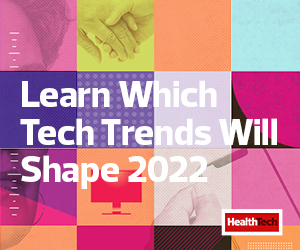Stronger Relationships and Steady Care through Telehealth
The traditional healthcare journey typically began with a patient’s in-person visit to a primary care provider, who would then refer that patient to a specialist as needed. However, telehealth use, especially during the pandemic, has started to adjust that journey.
“There used to be this notion that telehealth is transactional; it's for things like urgent care, where I don't need to know who the person on the other end of the call or the screen is, I just have a specific, short need to get help,” Holliday says. “I think the biggest shift that's occurred is people realize you can actually do relationship-based ongoing care through telehealth. That shift now has made consumers more comfortable with telehealth, providers are more comfortable, and it's created a whole set of companies that are redesigning their care, saying it should all be telehealth first for the things where that's appropriate.”
Virtual-first healthcare companies are marketing directly to consumers and offering a more personalized, digitally enabled start to the care journey. Patients can hop on a telehealth visit in the middle of a workday with ease instead of driving two hours to see a specialist.
DISCOVER: Learn how healthcare organizations can benefit from a virtual care workshop.
A Virtual-First Approach to Healthcare Promotes Teamwork
A virtual-first approach to healthcare also promotes coordinated, team-based strategies. Companies such as Virta and Onduo use remote patient monitoring tools, a digital platform and a care team to manage chronic illnesses such as diabetes.
A digitally connected care team supports a more holistic approach to health, Holliday adds. Instead of a specialist, a dietitian and a psychologist siloed off for a single patient’s treatment, a virtual-first approach fosters collaboration to provide a seamless patient experience.
“We build a team-based model where our providers are regularly communicating with each other about individual members and teaming to say, what's going on? How do we get these things resolved using each of us in our specialized capabilities?” says Holliday. Oshi Health’s integrated care team includes a gastroenterologist, a registered dietitian and a health coach.
Virtual mental health platform Ginger, which merged with Headspace earlier this year to form Headspace Health, has touted its use of data and analytics to support its providers.
“Traditionally in mental healthcare, most providers operate alone, with subpar technology to manage their practices and measure the effectiveness of their care,” says Dana Udall, chief clinical officer at Headspace Health. “Our providers join a collaborative team backed by technology that allows them to do more of what they love and do best, and to scale high-quality care. The backbone of our system leverages artificial intelligence and machine learning to enable collaborative, measurement-based mental healthcare.”












